We believe good fences make far more than good neighbors. Fencing has the power to clearly delineate public vs. semi-private or private spaces on a property, all while enriching a home with a sense of procession, character, and at times, even whimsy. Below, our favorite fencing choices in both styles and materials.
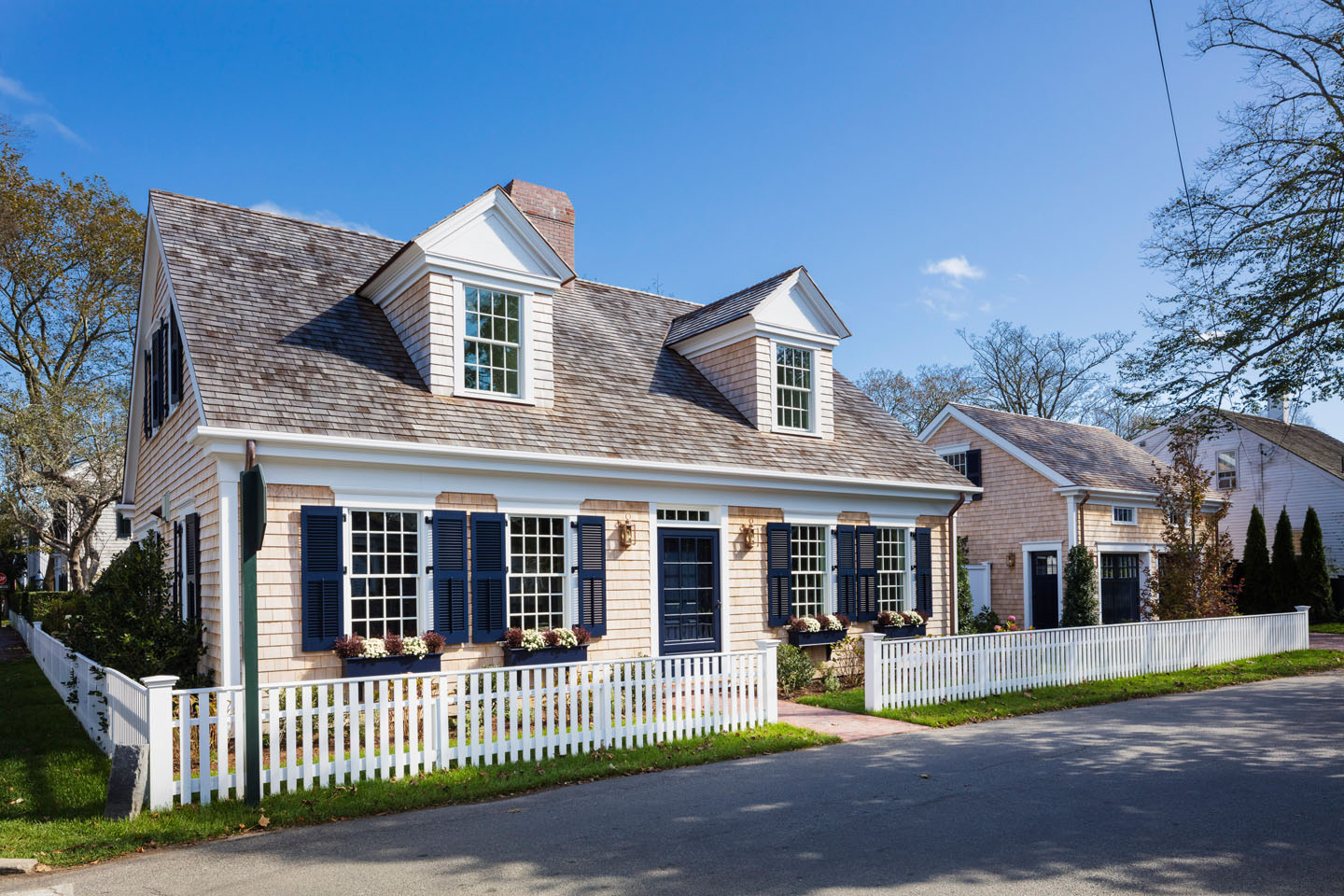
The Edgartown Fence
In historic Edgartown Village where we have completed more than 200 projects to date, the Edgartown fence is all but prescribed by the historic commission. A three-foot-tall picket fence with a straight rail across the top, the Edgartown fence is set back from the facade of a structure and proudly stands in front of many homes in town. Placing the Edgartown fence at the front of a property is indeed optional, but doing so goes along with our tenet of Architecture for the Greater Good. The fence allows for the pedestrianization of the streetscape, clearly defining public and private spaces, and grants uniformity to the neighborhood even when the homes represent variations on themes in architecture.
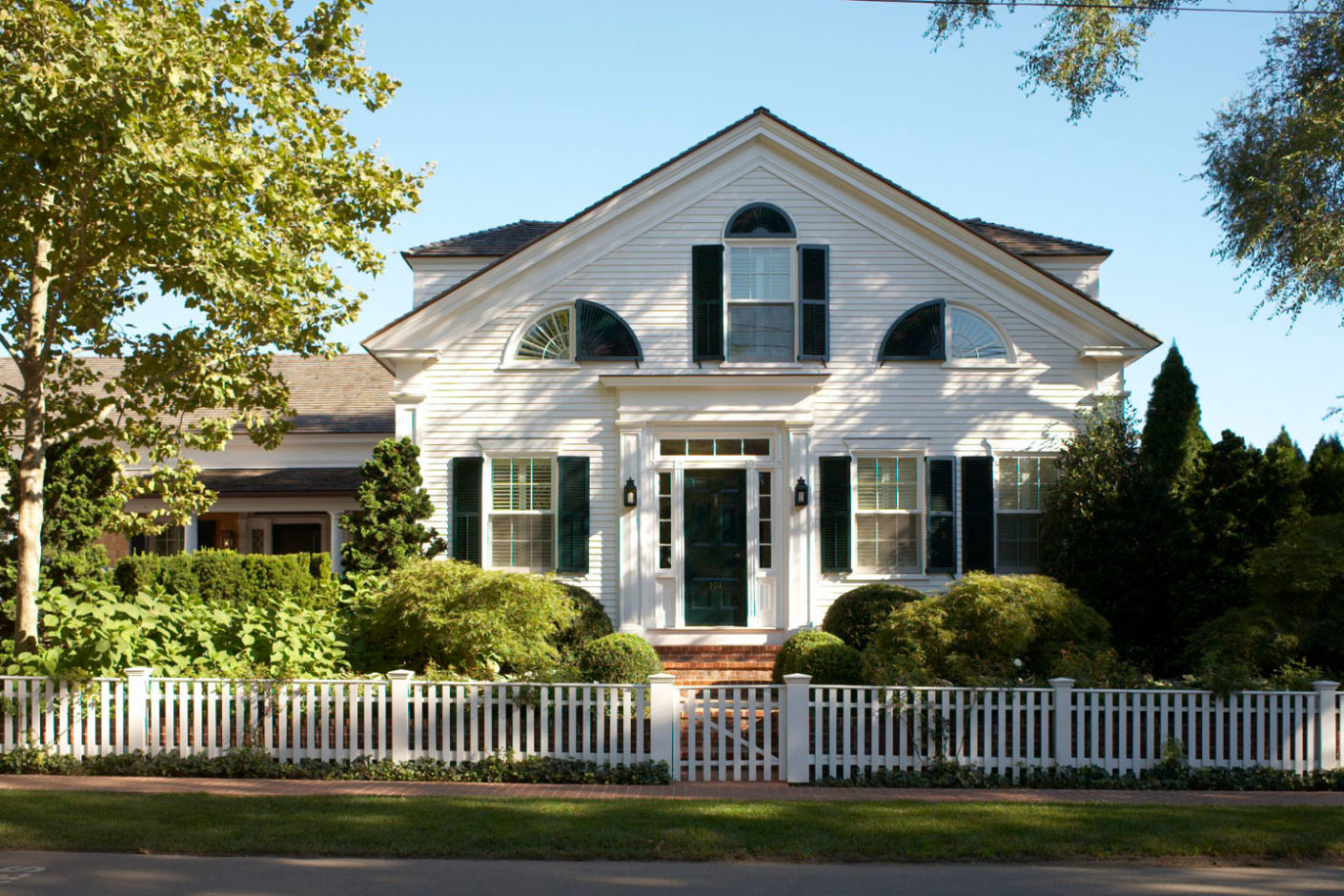
Surprisingly simple to produce, our Edgartown fences are built on-site, and are made with 4×4 pressure treated posts, readily available fence caps, and 2×4 rails and pickets. In our executions, whether on Martha’s Vineyard or on other projects with new urban flair, we often use the fence as a point of procession. Viewed from the street, the curb, then the fence, then the gate are visible. From there proceeds a small brick walkway which leads to a stoop and a front door. This critical layering of information and sequencing of details makes for a rich and vibrant experience of the property, all within public view.
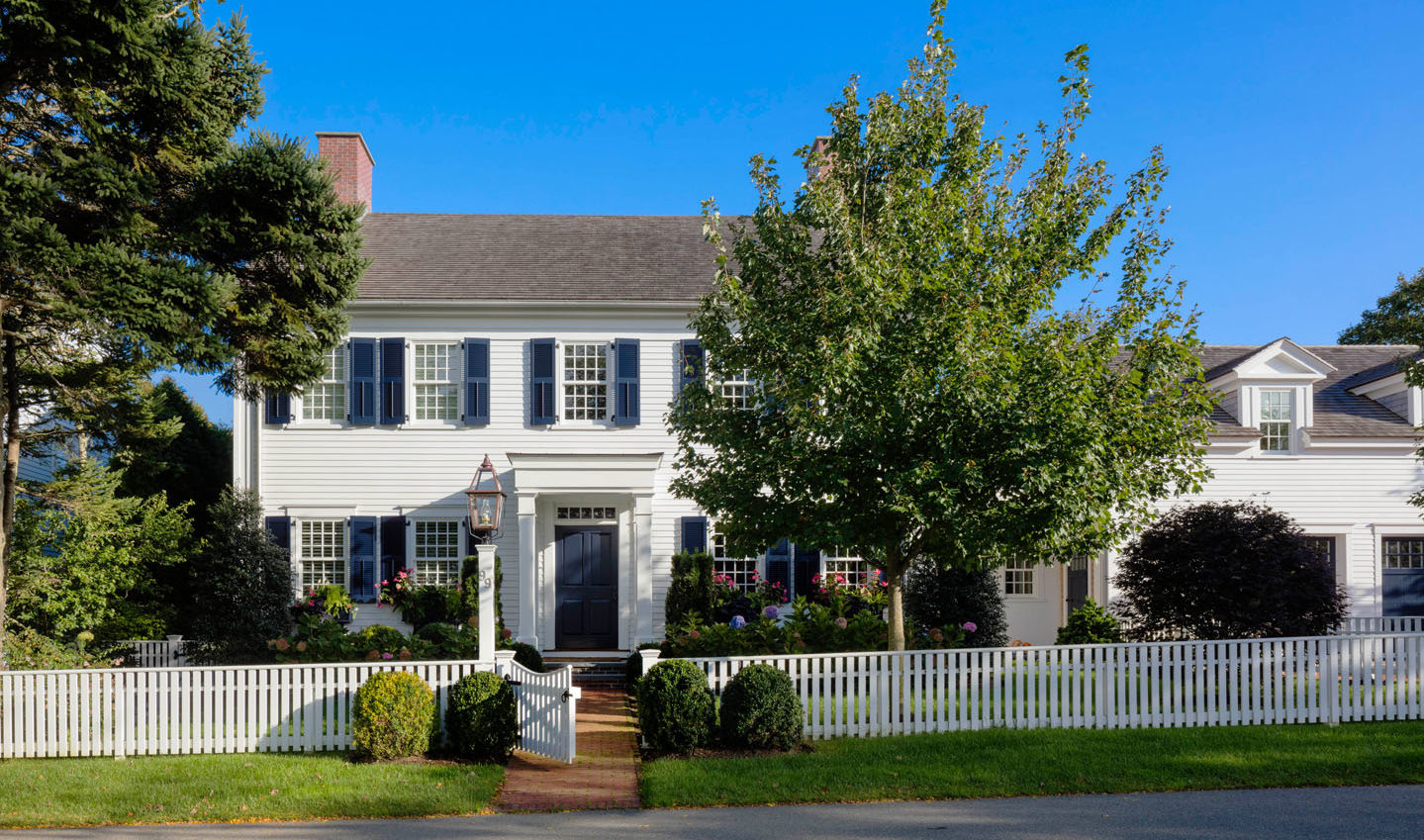
The Two-Rail Horizontal Fence
Outside of Edgartown, we often encourage the two-rail horizontal fence. Whether the rails are placed on the flat or on the diamond, this fence provides an authentic look that plays well for suburban or even rural properties. This particular fence lends itself well to layering, and we typically execute with layers of white fence backed by green hedge—privet or arborvitae are two of our favorites. Just as our architecture might offer layers of naturally weathered shingles with white clapboard and Essex green accents, this fencing allows for layering of natural plant materials, white fencing, and a green backdrop; it’s the same colorway in a different scale and pattern.
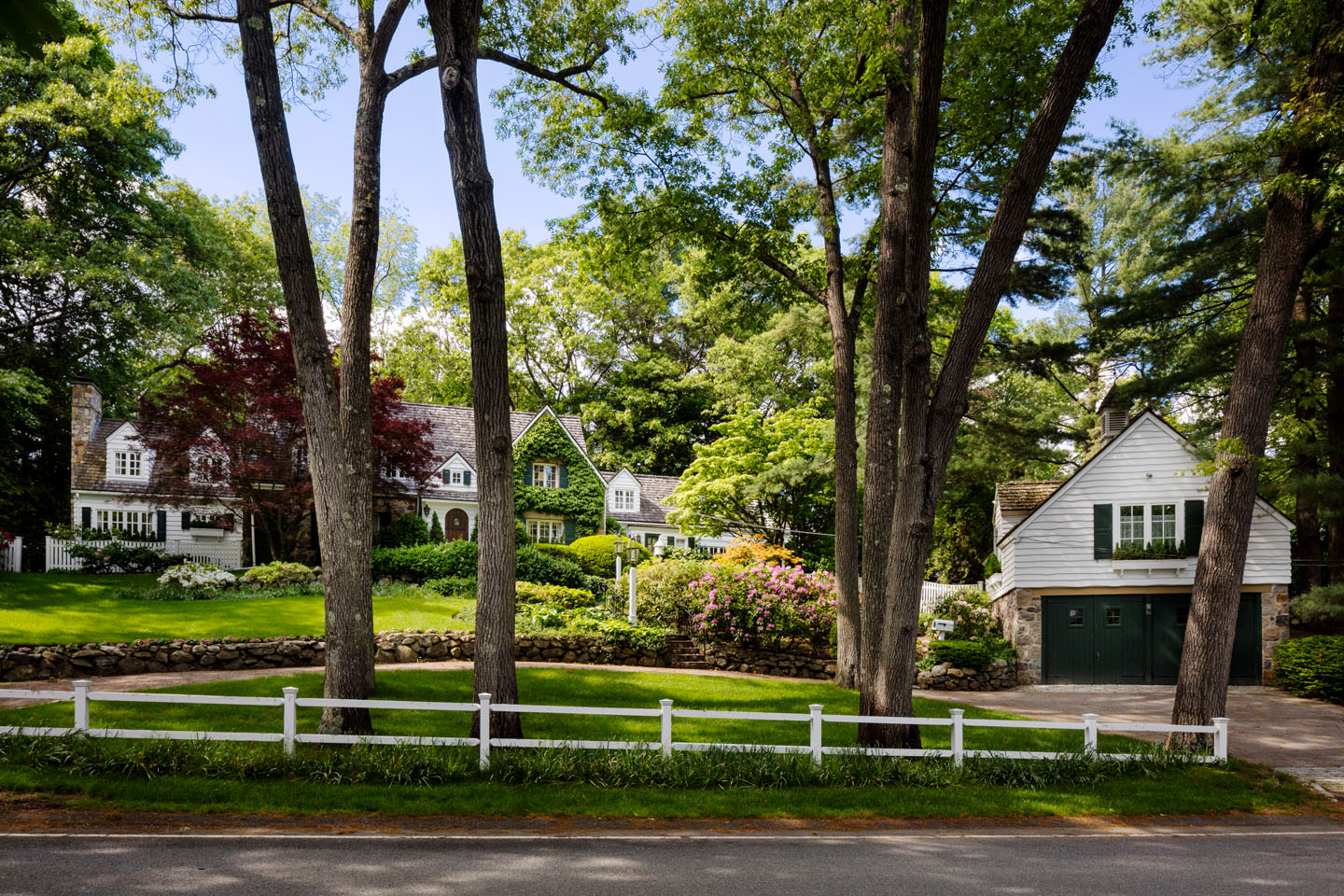
We feel so strongly about this fence execution that we wrote it into the design criteria of The Field Club on Martha’s Vineyard. Now, more than a decade after the club’s inception, as you drive down Field Club Lane and Field Club Drive the white two-rail horizontal fence stands as a crisp delineation of the club’s perimeter with four rows of six-foot-tall privet hedge behind it.

The Solid Board Fence
When it comes to defining the private realm—space within a property for the exclusive use of homeowners and their guests—the most effective option is a six-foot-tall solid board fence. We often use solid board around the perimeter of the rear of a property, at times with a gate to separate semi-private areas such as a driveway from truly private spaces. An estate-like feel can be achieved by planting against the fence and using subtle dark-sky approved uplighting for an evening glow.
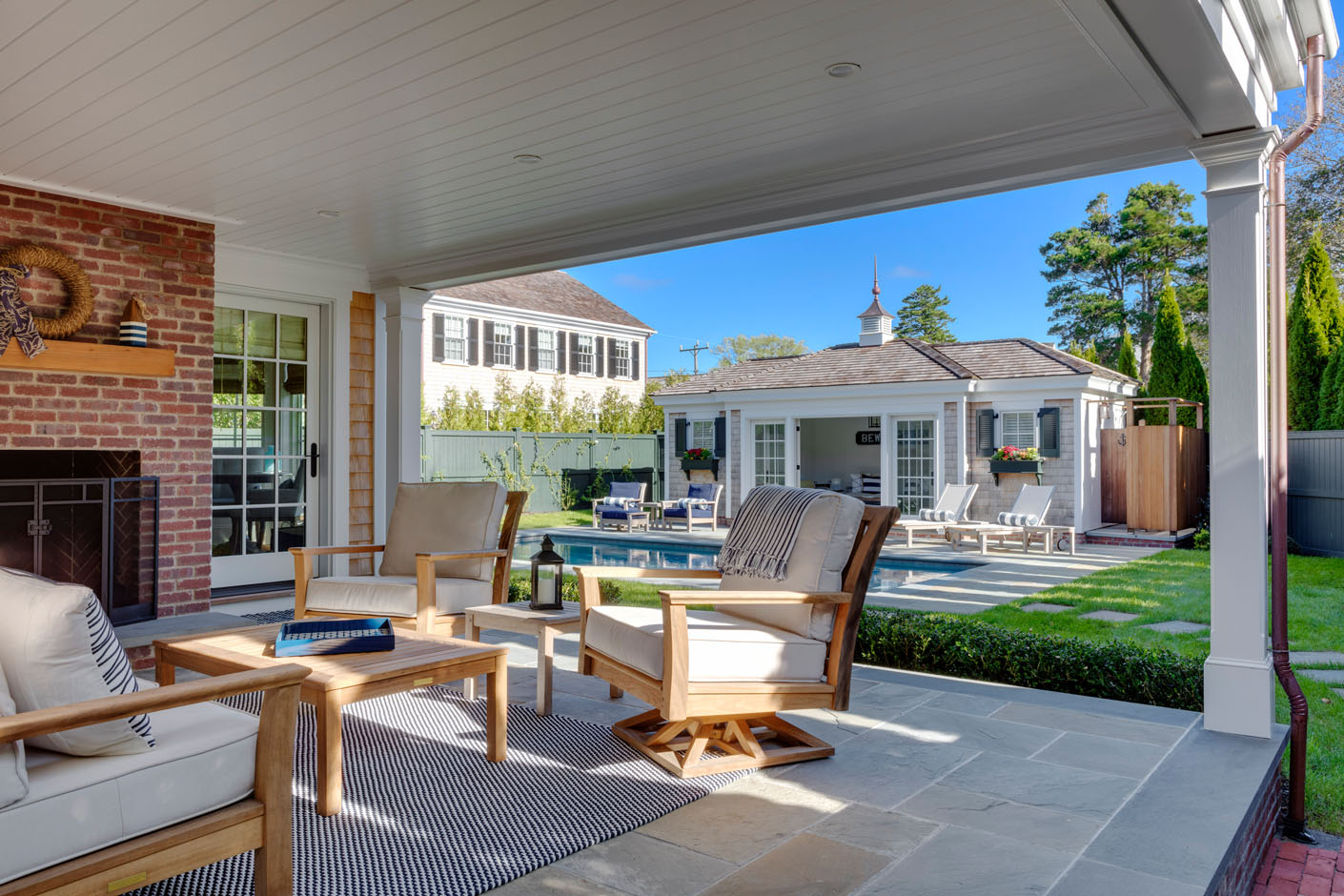
Extras: Arborways, Gates and Pergolas
An arbor can be an effective way to add yet another layer of character to a perimeter fence. Gates can be used in a similar fashion, especially when whimsical additions like fish, clovers, or shells are cut out as miniature portholes into the private yard beyond.
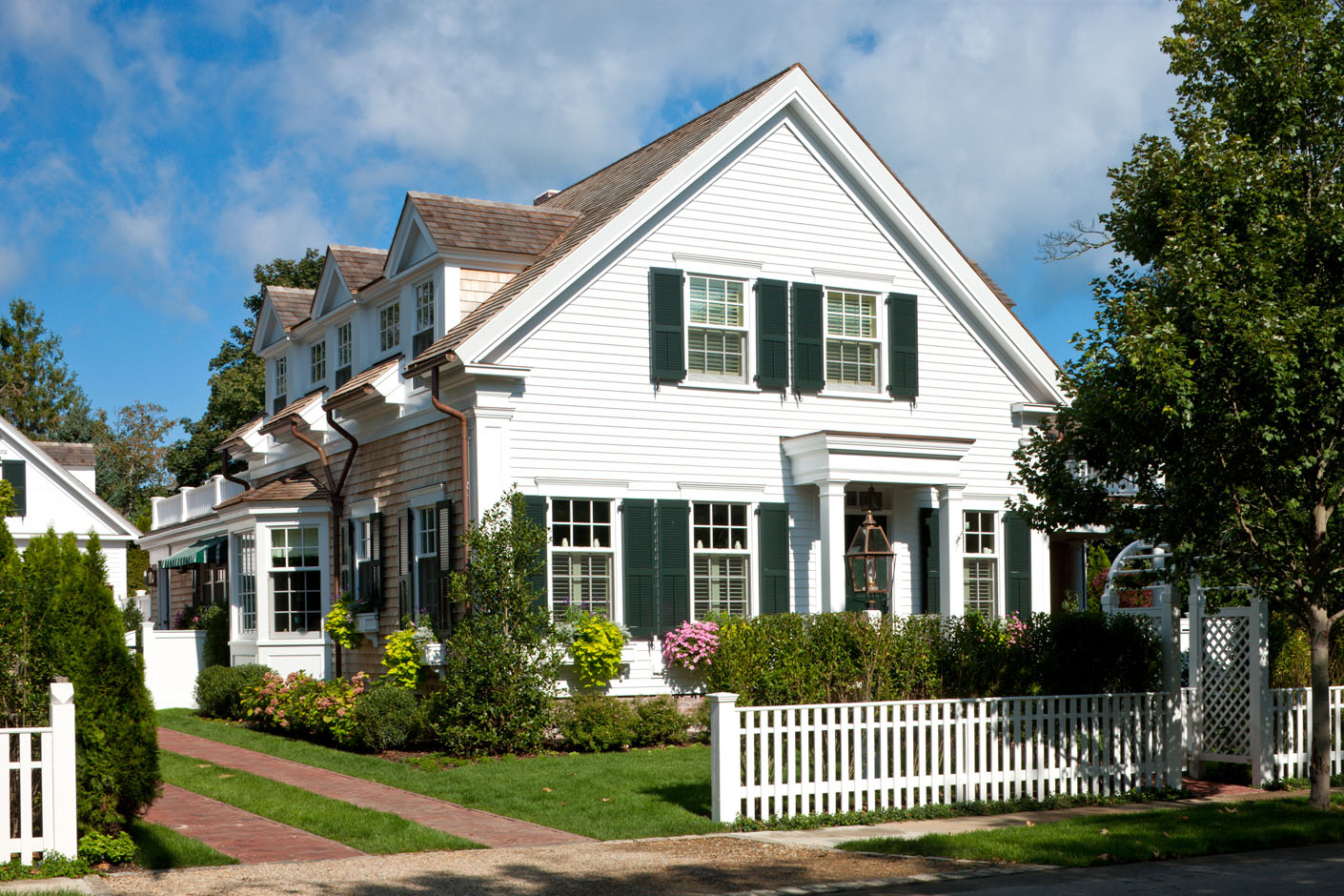
While not used to delineate a full property, the pergola can be used to define an outdoor space without adding to the square footage of a home. As Patrick himself states, zoning often dictates design. Covered porches—even without walls—typically count towards a home’s total square footage, but an outdoor patio covered by a pergola, beautifully adorned with flowering climbing vines, does not. For this reason, at times we will use a pergola to define an outdoor living space instead of covering the area with a rooftop.
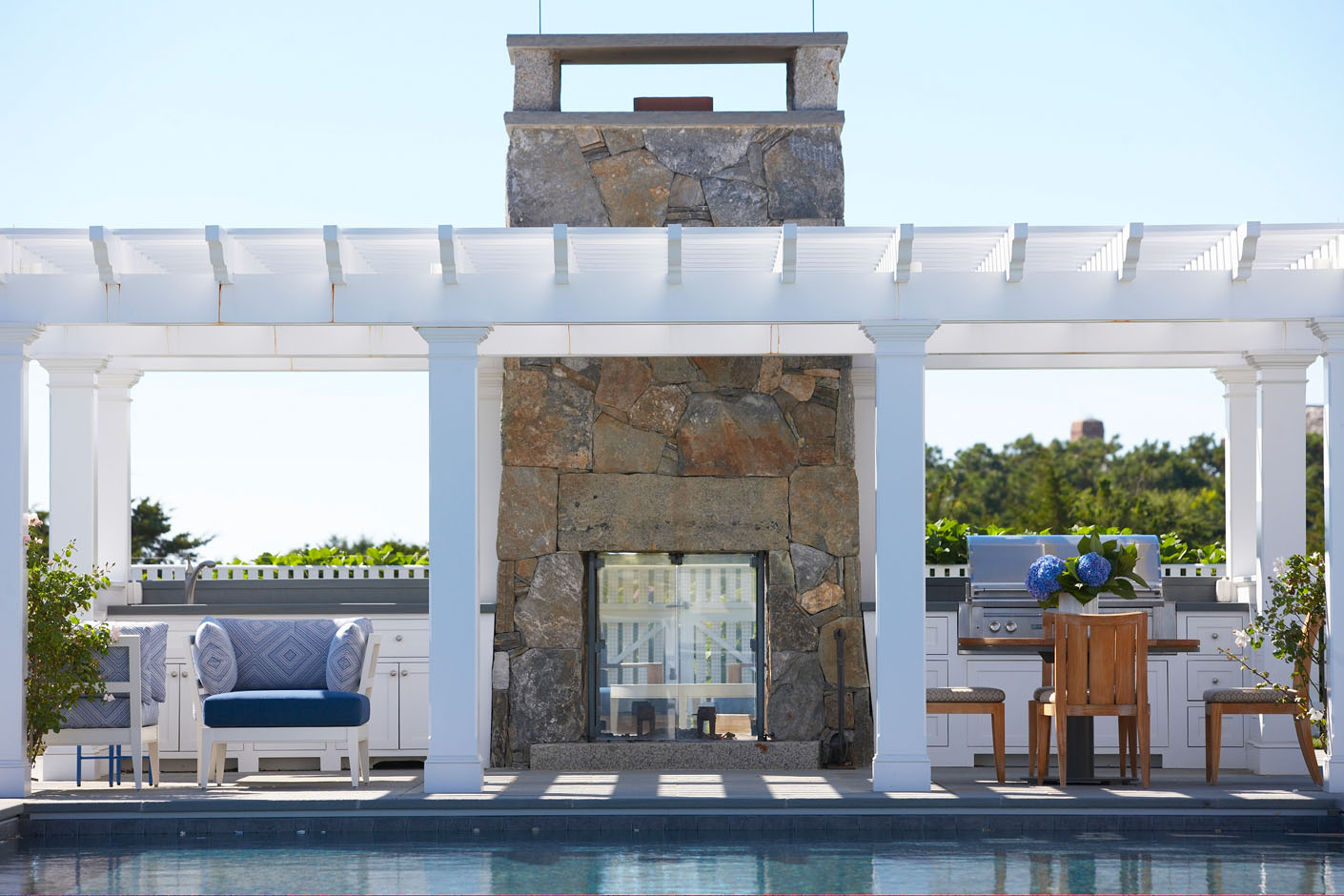
Wood vs. Man-Made Materials
Our preferred fencing material for both its texture and authenticity is cedar. Whether left to weather in its natural state, or stained deep hues of Essex Green or black, cedar fencing adds a premium element to a property. Should a client wish to pursue a synthetic material, we suggest Azek fencing in a matte finish to imbue a home with similar character albeit lower maintenance; many Edgartown fences we specify today are executed in matte Azek.
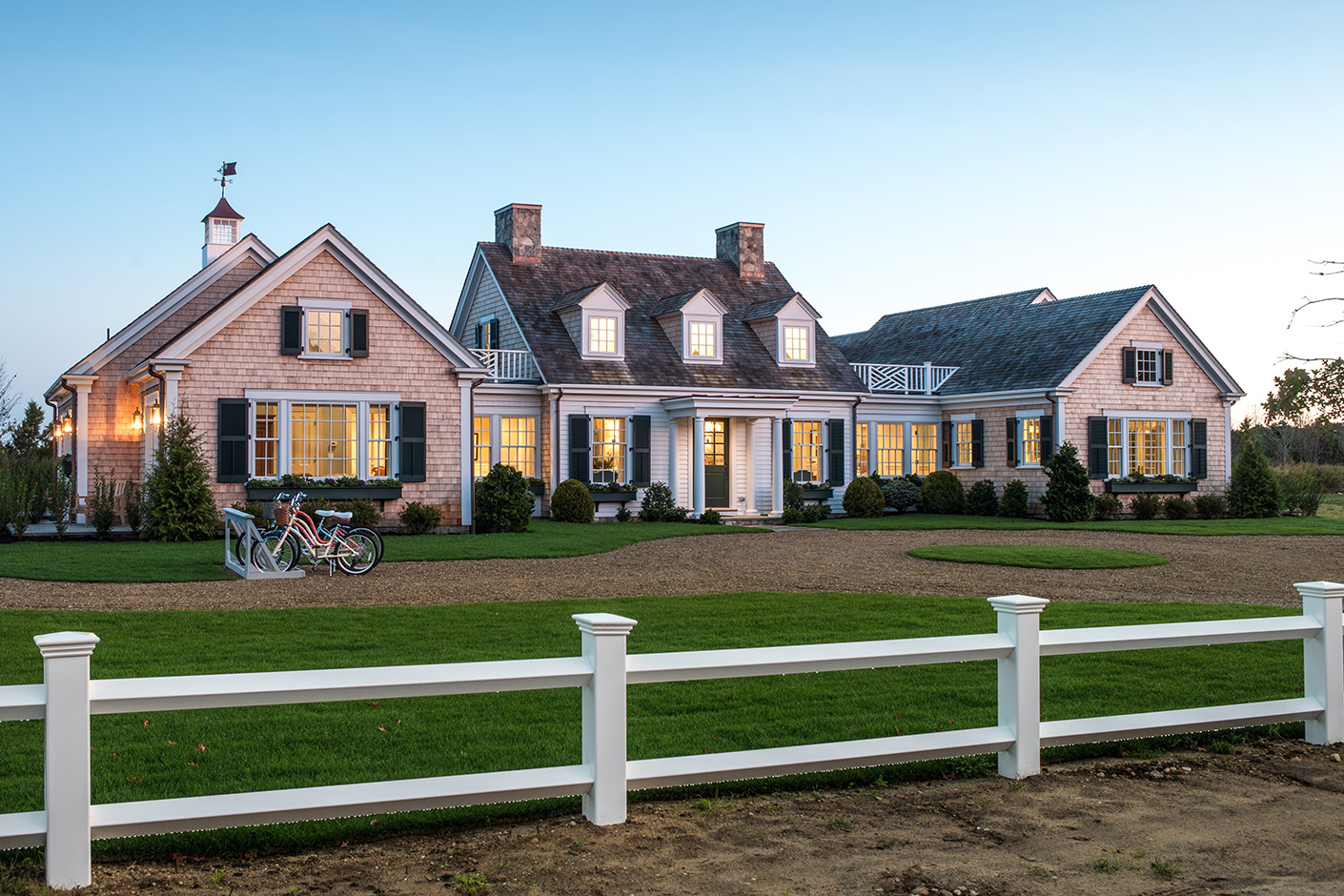
Considering redefining your own property? Feel free to contact us to learn how we might solve your goals. In the interim, we invite you to find meaningful inspiration in our portfolio.
Originally posted May 13, 2021.
Revised April 20, 2023.